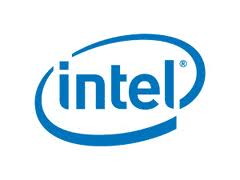Gail Chiasson, North American Editor
All of a sudden, we’re seeing Intel spending in a number of new technology firms, investing USD 10 million in the traffic-data firm INRIX – see also ‘Porsche Automobil Holding Puts USD 55M into @INRIX‘, Ed, another USD 62 million in virtual reality, drones and mobile, and, according to reports, expecting to invest up to USD 355 million altogether this year.
 Intel and INRIX are developing a number of analytics platforms and applications for the Internet of Things, and are expected to make a play at both the Internet of Things and Big Data markets.
Intel and INRIX are developing a number of analytics platforms and applications for the Internet of Things, and are expected to make a play at both the Internet of Things and Big Data markets.
The investment in INRIX was announced at the Intel Capital Global Summit, with the funding to be used to develop the latest applications and analytics platforms for smart cities. The investment was made after the two companies demonstrated a smart cities application at the White House in Washington, designed to measure air quality, traffic and population growth.
INRIX, launched nine years ago, receives real-time traffic data from its users as they drive, which it then analyses and makes available to users The company, which counts Ford Motor Company, MapQuest, Microsoft and Toyota among its industry partners, also sells information services and analytics tools to some 60 transportation agencies to help drive costs out of daily operations and pinpoint areas that could benefit from road and transit improvements.
As part of the deal, Intel has licensed INRIX data analytics services to power Intel’s location-based services platform, while INRIX is making available its APIS to Intel’s ecosystem of partners and developers via its Mashery API management service.
The funding also comes after the Porsche Automobil Holding company recently bought a 10% stake in INRIX for USD 55 million. Hank Skorny, vice-president and general manager of Intel’s services division, says INRIX holds a “unique opportunity to deliver value across the Internet of Things.”
Skorny says, “By integrating with our API services, we are able to offer our customers the unparalleled LBS, big data and analytics capabilities of the INRIX platform. Through these APIs, developers will have the ability to power apps with real-time, global location data and services for smart cities.”
Other latest funding highlights Intel’s recent focus on wearables, eye-tracking technology and mobile, as the world’s largest chipmaker works to expand its business beyond PCs, which have lost appeal as more consumers opt for smartphones and tablets. Intel makes the vast majority of its profits from PC and data-center chips, so now needs to find new places to grow.
Avegant, a virtual-reality company based in Redwood City, Calif., was among the 16 new investments. The firm is developing Glyph, a set of consumer goggles that double as headphones. Avegant raised more than $1 million through crowd-funding site Kickstarter earlier this year and on Tuesday announced a $9.37 million funding round for the company, with Intel as a leading investor.
Other Intel investments included funding for Braigo Labs, a startup created by 13-year-old Shubham Banerjee that makes a low-cost Braille printer; PrecisionHawk, which uses small drones to collect and analyze aerial data; Audyssey, which helps improve sound quality for home theaters, TVs and mobile phones; and Screenovate, which lets users wirelessly beam movies and games from their smartphones and tablets to their TVs.

Follow DailyDOOH